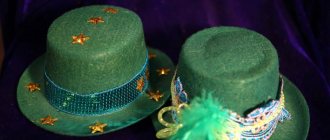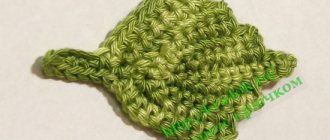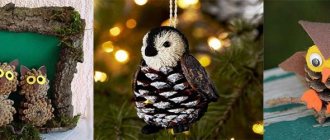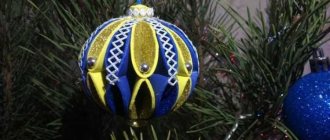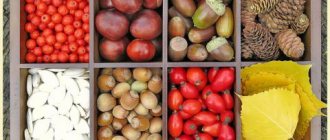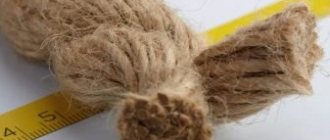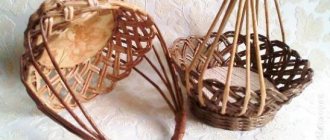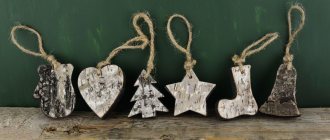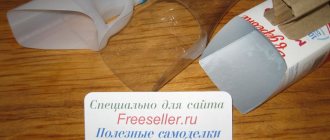Autumn time is not only rain, slush, cold weather, but also a riot of colors that nature gives us in the form of colorful leaves. By showing your imagination and using these gifts of nature, you can create amazing creative works. There are a lot of ideas for making ekibana from leaves with your own hands in the fall, because nature itself promotes this.
You can build an ekibana from leaves with your own hands in the fall not only from fresh flowers, but also from leaves, dried flowers, fruits, pine cones, paper, sweets, etc. The results are very beautiful and bright crafts that are pleasing to the eye.
What is Ekibana?
Ekibana is the Japanese art of connecting and arranging flowers and shoots. The essence of this art is to emphasize the beauty of living plants, their momentary freshness, the breath of their short life. In Japanese, the character for "flower" means "that which grows on the earth, lives and dies." The beauty of both the capricious beauty of the rose and the modest field bindweed lies in the transience and evanescence of their beauty.
The task of the Ekibana master is not only to construct an original composition, but also to convey in it the most colorful way his own thoughts about human life and the essence of existence. That’s why ekibans don’t have names: everyone can see in them what suits their mood.
Basic Rules
A simple set of rules will help you quickly master the subtle art of flower arranging. It includes several key points:
- Central element. Do-it-yourself spring or autumn ikebana for children (as well as other compositions) should have its own center, a place that is allocated to only one plant, leaf, or twig.
- Dynamic location. A Japanese bouquet should give the impression of an absolutely living organism. It should not have the severity of bouquets familiar to Russians. On the contrary, they try to place all the elements at an angle to each other, the vessel, the surface where the vase will be installed. Masters are very fond of unusually curved elements, which allow them to more fully convey the emotions of the creator of an elegant creation.
- Asymmetry. Apart from the center, ikebana should not have regular lines or artificially pretentious forms. Japanese art is designed to combine in a bouquet pieces of nature (sky - shin, earth - hikae) and man - soe, who is part of this world. Ideally, bouquet designers strive to achieve three planes that form an irregular triangle.
Before starting to create a composition, a specific place or a specific recipient is selected for it. And this is another difference from traditional bouquets, which can be presented to everyone indiscriminately.
Composition color
In true Japanese ekibana, color denotes deep philosophical meaning. Green embodies spring and the forces of the earth. Red fire represents the color of summer. For the Japanese, white represents autumn—the time of rice ripening. And the low season - winter - is indicated in black. For Europeans, the brightest orange and red shades of nature are associated with autumn. The ekibana made from leaves in the photo (it’s not at all difficult to make it with your own hands) conveys the riot of colors of this time of year.
The ancient language of flowers has been practically forgotten by Europeans. And in Japan, to this day, plants and flowers are strongly associated with everyday life. Pine - eternal youth, peony - prosperity, bamboo - perseverance and spiritual purity, chrysanthemum - joy, iris - courage, plum - a symbol of life overcoming difficulties. And orange flowers are memories. The branch of an apricot tree is associated with female beauty: the eyes of Japanese women are often likened to elongated apricot seeds. A blossoming apple tree branch represents wishes for peace in the family. Jasmine signifies enjoyment of life.
Ikebana - a source of inspiration
The Japanese compose similar compositions based on philosophy:
- sin – personifies the sky, this is the highest level;
- soe – image of a person, average height;
- hikae is a symbol of the earth, located low parallel to the bottom.
The main condition is the installation of central elements in a triangle configuration, giving them asymmetrical slopes, and subsequent filling of the empty space. Existing style directions:
- Rikka is distinguished by the vertical arrangement of plants; the style was characteristic of ritual Buddhist rites.
- Moribana resembles miniature nature landscapes. Greenery is accentuated in a wide container.
- Nageire is full of philosophical meaning, highlighting natural components, often a single object.
- Jiyuka is a European offshoot that combines any materials.
To create a masterpiece, it is not necessary to strictly follow Japanese dogmas; creative vision and great desire are enough.
Ekibana laws
The spirit of ekibana is diverse, but each compiler creates a bouquet in his own way. Even in one flower and one branch great nature should be reflected. When creating a bouquet, you need to communicate with the flower in your soul. You should begin to compose a composition with the proper attitude, calmly and carefully. Ekibana is not only a painting, but also music and sculpture. The eyes, hands and heart of the person creating the bouquet should not be held captive by any rules. Ekiban must contain three unchanging elements, meaning three principles. They can be personified by a flower, a branch and grass. According to tradition, the compositions certainly reflect the season. The vessel plays an important role - it should not suppress the composition, but form a single whole with it. There are simple vases made of ceramics and vessels made of metal or plastic that are fancy in shape or color.
Bouquet in a pumpkin
Pumpkin is a distinctive base for any ikebana. And that's why:
- It is stable, which means the composition will not tip over.
- It has a vibrant color that makes it attractive for any bouquet.
- Any elements can be inserted into it due to the specific structure of the pulp.
For this composition you need:
- Small round pumpkin.
- Autumn flowers in yellow-orange colors. Any, which ones, it doesn’t matter.
- Rowan berries.
Unusual autumn composition with pumpkin
Creation order:
- Trim the bottom of the pumpkin so that it sits evenly on the surface.
- Cut off the lid and clean out the seeds - the base vessel is ready.
- Trim the stems of flowers so that their height is slightly higher than the depth of the pumpkin. You need to do the same with rowan branches.
- Now - an absolutely creative job: placing the composition in a pumpkin. Moreover, this must be done tightly so that there are no gaps in the bouquet.
Important! This ikebana cannot be called classic, since all the elements in it are arranged very tightly and densely. Although the idea itself was borrowed from Japanese art.
Technical secrets
Technical secrets include a variety of ways to keep plants fresh. The ends of branches and stems are cut under water, split, dipped in boiling water and even burned. The next step is to secure the elements of the composition in the vessel. The main fastening tool is considered to be a kenzan - a metal stand with protruding needles, between which branches and large leaves are fixed. To prevent the leaves from curling into a tube when they dry, they must first be placed between paper sheets and dried with an iron. After this procedure, the leaves become more fragile, but do not lose their shape.
Craftswomen who have repeatedly made original ekibans from leaves with their own hands in the fall advise treating the finished flowers with vegetable oil, which soaks them in for two days, which allows the buds not to lose color and shape. It is also recommended to cover the bouquets with hairspray to protect them from early drying. To prevent the leaves from falling off, add glycerin to the water: 1 part to 2 parts water. At the same time, the branches will delight you much longer or will preserve the brightness of the colors and texture of the leaves until spring.
Subjects
It is very important to put into the ensemble the mood that owns you, your worldview. Often this can be an event or simply the embodiment of the weather outside the window
Seasons bring certain motifs to ikebana. Very often they are made for a particular moment, holiday, as a gift or for yourself. New Year, winter, and Christmas themes are often used in ikebana, as well as autumn.
The spring mood is embodied mainly with the help of flowers: tulips, hyacinths, daffodils, freesias and branches of fruit trees. First of all, decide which of the inflorescences will play the main role and which will play a secondary role; the entire ensemble is built around this.
Creation algorithm:
- prepare all elements and tools;
- prepare the material according to the size of the vessel;
- We moisten the fixative and place it in a container;
- add water until the sponge is covered;
- remove excess leaves from flowers, trim stems;
- place more expressive flowers in the center;
- then randomly add secondary flowering plants;
- we decorate branches of fruit trees;
- We place small flowers along the edges, emphasizing the size and expressiveness of the central ones;
- We straighten all the plants, give them the right direction.
Autumn motifs are very multifaceted, they are bright, rich and effective, while the mood of nature’s withering can be either the main or a semi-hint. A bright branch with beautiful autumn leaves, combined with matching flowers, is enough to create an elegant ensemble. Fantasy is not restrained here.
We offer an algorithm for creating an autumn motif:
- At the bottom of the vessel there is a latch with spikes; it can be purchased in florist shops;
- the branches of an autumn tree, for example a fruit tree, are thinned out;
- give them the necessary direction and shape;
- secure in container;
- trim the stem of the selected flower, for example, roses, chrysanthemums;
- free them from excess foliage;
- place flowers at different heights, for example, a rose above, a chrysanthemum below;
- adding decor, straightening out the ensemble.
Materials for a composition of roses
The blessed time is autumn. Do-it-yourself ekibana from leaves in the form of one rose or a whole bouquet can be made quite simply by collecting the necessary materials and following certain instructions.
To build a rose you will need:
- leaves of a certain color;
- twigs for stems;
- green tape;
- scissors;
- threads
It is better to select leaves that are large, fairly dense and pliable. Maple leaves are perfect for this, but you can also make a rose from linden or viburnum leaves. The selected leaves must be washed and dried between the sheets of a book or by ironing.
Types of styles
The centuries-old study and creation of ikebana has divided into several directions, which have become used among modern florists. Such a bouquet can become a decorative element for a room or an ideal gift for a loved one.
Ikebana
Rikka (standing flowers)
This style welcomes pomp and theatricality and glorification of Buddhism. Carrying out religious ceremonies required a lot of decorations and postulates that personified the greatness of living nature.
Ikebana
This trend is characterized by lush bouquets with high branches in large flowerpots. Such compositions were used to decorate the houses of great rulers and temples.
Ikebana
seka
Seka style consists of arranging a bouquet of three flowers. The branches are placed in the vase so that their top forms a scalene triangle, which is interpreted by philosophy as a symbol of harmony.
Ikebana
Nageire (flowers thrown into water)
Romantic duet of orchids
This style involves the natural arrangement of flowers in a vase, with the stems positioned at the edges of the vessel. Here the strict postulate of sex is already retreating, which gradually began to displace it.
Nageire bouquets could be vertical, hanging, table, floor or wall. This explains their popularity among the Japanese.
Ikebana
Moribana
Unsurpassed Harmony
This is a combination of several styles, characterizing flowers grown into tall flowerpots. Square, round and rectangular vases are used to create compositions.
Ikebana
The main emphasis when composing bouquets is on the size, number of plants, beauty of lines and variety of colors.
Ikebana
Jiyuka
A modern direction characterized by creative freedom. Here the author can select and combine the background, materials and colors himself. A composition in this style allows the use of natural stone, fresh and artificial flowers and plants.
Ikebana
It is this solution that has become popular in the interior design of homes and restaurants.
Ikebana
Making a rose
An interesting activity would be to build a do-it-yourself ekibana from leaves in the fall for schoolchildren. First, a bud is formed from the core. To do this, take the first piece of paper and bend it halfway with the front side out. Roll a medium-thick roll from the bent leaf - the core of the future rose. Then they take another leaf and bend the top, which protrudes beyond the bud. Wrap the core of the future rose with this leaf, twisting and pinching from below first one, and then the second half of the leaf. In the same way, apply the remaining petals to the bud one by one. It is better to choose the leaves of the same shade, but an original contrasting flower will also look beautiful. Shape the rose petals until it becomes quite fluffy. For a completed flower you will need 5-6 leaves. Carefully pierce the base of the bud with a twig and wrap it with threads to secure the flower. Then wrap the twig with green tape. This way you get a beautiful rose on a stem. The rest of the roses are made exactly according to this pattern. The bouquet can be decorated with colorful bright leaves of various shapes and shades.
This is interesting: Oxfords But not Brokeys
Berries for Ekibana
How to make ekibana from leaves with your own hands in the fall? Colorful autumn berries are chosen as decoration: rowan, wild grapes, viburnum, hawthorn and rose hips. They look great in a wreath or candle holder.
Any composition of autumn leaves can be replenished with bunches of rowan berries or other berries, and autumn fruits or nuts can be placed around the vase.
Making crafts with children
The most fertile season for creating ekibana is autumn. This is the easiest time to make a beautiful ekibana from leaves with your own hands. Nature, as if saying goodbye, generously shares with us colorful leaves and flowers, juicy fruits, pine cones and chestnuts, various nuts and other gifts.
Children will be interested in choosing the most beautiful and original gifts from this material; all that remains is to use their and their parents’ imagination and make autumn crafts with their own hands for kindergarten. Such a very colorful craft would be a DIY “Autumn” leaf ekibana for kindergarten.
Such creative activities captivate the child so much that he becomes diligent, collected and more purposeful. And having made an “Autumn” ekibana from leaves with their own hands for kindergarten, children feel proud of their work and have a great desire to show it to their friends.
Ekibana made of leaves on an autumn theme for kindergarten is the best option for parents to have an interesting and useful time with their child, to open up his creative potential. The advantages of such skill also lie in the fact that all the raw materials for crafts are obtained free of charge, and the result of creative creation is limited only by the imagination of the child and his assistants.
New Year's
This will be able to decorate the house not only on the eve of the holidays, but at any other time. Materials:
- Thick twine.
- Dry sorghum.
- Pine branches.
- Cones.
- Glue gun.
- Small round Christmas tree decorations.
- Lilies.
- A couple of sea buckthorn sprigs (dried).
Nice room decor for New Year's holidays
Layout order:
- Twist the twine into a ring. It is advisable that its length is enough for several turns.
- Using glue, secure the pine cones and branches at one point. If the latter are too thick, then they need to be thinned out.
- Glue toys, flowers.
- To make it more festive, the rope can be coated with golden paint.
Variations of this New Year's wreath can be very different. So, instead of toys, you can attach bright physalis or branches of sea buckthorn and rowan.
15
DIY raw materials for ekibana
New Year's ikebanas are often made from natural materials. But autumn crafts have a special charm. So, you can make such a craft from different materials:
- Papers.
- Dry leaves.
- Fresh and dried flowers.
- Fruits and vegetables.
- Cones and fir branches.
- Tree leaves.
- Cereals and legumes.
Depending on the desire of the creator, absolutely any craft can be made. For example, beans can be used to make a beautiful heron or magpie. The cones will make a wonderful deer or bear. And vegetables like cauliflower and carrots can be used to make ice cream. The composition of autumn leaves turns out wonderful. Such crafts are often done in schools, because they are quite easy and quick.
Features of art
Composition in autumn style
Before you start making ekiban, you should get acquainted with the features of this type of art . Recommendations:
rigor and conciseness are the basic principles when composing combinations; you should pay special attention to the location of the main components; during work, materials are placed on the right, and the container is at eye level; live and dry gifts of flora are used, as well as trees, branches, berries, fruits; the main material is living gifts of flora, which have an individual philosophical sound, which must be taken into account when compiling.
Ideas for Ekibana
There are a lot of ideas for creating them. For example, do-it-yourself ekibana “Autumn” made from leaves, the photo of which is shown below.
To do this you will need the following materials:
- pumpkin;
- branched branch, original in shape;
- bunches of rowan;
- autumn flowers;
- prepared leaves;
- cones;
- heat gun;
- Polish for hair.
Do-it-yourself ekibana from leaves “Autumn” (master class is in front of you) is done like this. Carefully cut off the bottom of the pumpkin, and make a small hole at the top through which to free the pumpkin from the seeds. Glue the pine cones and flowers to the base using a heat gun. Insert and secure the main branch into the pumpkin, and decorate the top of the pumpkin with rowan branches.
Another option is shown in the figure below.
Let's celebrate the New Year
Expressive strokes will enliven your home, adding a wonderful aroma. Take a wooden box, laying it with the paws of spruce and pine. Fill the voids evenly with oranges, lemons, tied with ribbons or attached to sticks. You can make them unusual by decorating them with raisins or grapes on toothpicks. Citrus fruits are decorated with cut out patterns and tied bows.
The zest is of no small importance - it produces magnificent roses against a background of pine needles. If you place coffee beans on a plate and place these roses on them, the room will be filled with fragrance. Hearts, Christmas trees, and stars are cut out of the peel using molds. After passing a rope through the hole, they are hung from the ikebana.
An important object is a candle surrounded by pine needles, white carnations, pine cones, and light twigs. Any color palette is possible.
tangerine tree
Tangerines are wrapped with voluminous threads that differ in color from them. Place the selected trunk or root in the container. We tie New Year symbols to it with threads. Green ribbons, folded into bows, are pierced with hairpins and reinforced in the gaps. We decorate the base with a spruce tree.
New Year's resolutions
Master class on creating an elegant model. We will need:
- Elongated transparent vase.
- Orange peels.
- Needles.
- Golden ribbons.
- Glass balls.
The compositional design will look charming if you put a toy from the Christmas tree or a pine branch inside. Dry the zest by wrapping it around the golden balls. The attributes are distributed on a glass tray standing on top of the flowerpot, with ribbons falling in waves from its edges. The remaining elements and the original candlestick are placed below.
Wreath
A circle of any diameter is made from durable twine in several layers or braided. Cones, pine needles, and New Year's decorations are attached to it. The latter can easily replace bunches of viburnum, sea buckthorn, and physalis. You can apply silver or any other paint on top.
DIY autumn ekibana
Novikova Maria Vyacheslavovna
Ekibana is the ancient Japanese art of intelligently arranging natural materials. Although initially it was used exclusively for sacred purposes, over time the religious aspect ceased to be of great importance. Today, ekibana is a great way to decorate a home and add some new touch to it. And it doesn’t have to be exactly oriental motifs, because this art has gained popularity all over the world and there is an incredible number of schools and methods that will help you with your choice.
This is especially true for autumn Ekibana. Why? The answer is simple. After all, it is in the fall that there are fewer and fewer fresh flowers and making bouquets to decorate the house becomes more problematic. At the same time, an incredible amount of other natural material appears (dry leaves of amazing colors, acorns, chestnuts, pine cones, tree fruits, dry grass, etc.) which can be perfectly used for making natural autumn compositions. In addition, such material is much more practical because it does not succumb so quickly to the destructive influence of time and will be able to please you for many months.
It is better to start preparing for the production of autumn ekibana in advance at the beginning of autumn. After all, autumn weather is so fickle and unexpected rains or frosts in the middle of October can ruin all your plans. Therefore, it’s better to take a short walk in the nearby forest on a beautiful September day and collect everything that may be useful in making your masterpiece. These can be dry leaves, the last autumn flowers, tree bark, fruits, dry grass and in general anything that seems original to you.
This is interesting: Scientists have invented a new medicine for complete dental restoration
When you have already collected a sufficient amount of material, it is important to prepare it correctly. Leaves and flowers need to be dried. You can do this by hanging them upside down in a dry, dark place. If you want the color to be brighter, you need to leave your material in glycerin diluted with water 2 to 1. You can also spray twigs, dry grass and other materials with hairspray (possibly with glitter). After this they will look even brighter.
For the shape of the autumn ekibana, you can use a tall narrow or wide vase. Or, more original, artificial coasters. A cut of a tree or a pumpkin is perfect for these purposes.
To attach the parts of the autumn ekibana to each other, use wet sand, ceramic drainage, and foam. Heavy branches are best secured using a gypsum solution. You can also make holes in a piece of wood using a thin drill and fill them with putty, but be sure to match the main color.
In general, the process of making autumn ekibana completely depends on your imagination and capabilities. The only requirement before starting work is the formation of the main “backbone” of the composition. Think it over from the very beginning in order to approximately understand what result in form you are striving for. Next, you can completely leave your creation to creative flight. Add small leaves and roots, already prepared dried flowers or twigs coated with varnish - do whatever you want. The main thing is that the end result looks harmonious and that the colors you use combine perfectly.
If you want the autumn ekibana to look even more original and go beyond the generally accepted canons, do the following. Stick dried flowers and leaves into orange or grapefruit peels. This will give your composition some tropical shades against the backdrop of the delightful Russian nature. Also, actively use soft and flexible branches for connection; willow ones are perfect; they will help you combine all the elements of the autumn ekibana so that they look more organic.
Thus, autumn ekibana is a great way to decorate your home and workplace for a long time. This is also a wonderful way to express your creativity, because the manufacturing process requires a fair share of extraordinary solutions. Imagine, create, create something out of the ordinary and let your loved ones be proud and enjoy your masterpieces!
Jiyuka
Freedom of style is manifested in the originality of the choice of material; this is a kind of surrealism of ikebana made from natural materials. It combines the ancient art of bouquet arranging with the modern eye of an artist. Here, any modification of the shape of the leaves, the addition of materials, both natural and inanimate, is possible. Dry herbs and leaves, fruits, glass and stones, and plastic are often used. An unusual shape of the vessels in which the masterpiece is created is also chosen.
The free style of bouquets allows for the use of mixing other styles. Plant materials from the surrounding nature can be used, geometric symbolism and color mixtures are added. Modern textured materials allow the imagination of artists to run wild, embodying the most reckless ideas.
The Jiyuka style can create countless looks by combining plant and man-made materials.
That’s why now I always bring rowan fruits from the dacha. Incredibly beautiful result!
Tags
You don’t have to be a designer or florist to be able to create a composition from nature’s gifts that will decorate your home interior, loggia, terrace, office space or garden plot. So I wanted to create an atmosphere of autumn comfort in the house. What I ended up with delighted everyone at home and guests.
And the source of inspiration for this unusual autumn composition was the rowan tree, which grew so beautifully in the country house. In my opinion, the rowan fruits, in color and shape, are simply the ideal material for autumn creativity.
Bunches of rowan berries look very attractive in a wreath or candlestick; it is also appropriate to place them on a table or near the fireplace. These berries go well with autumn leaves, reminding us of our favorite season.
History of origin
One legend tells about the emergence of the art of ikebana. One day, a strong hurricane with a thunderstorm swept through Japan, which destroyed everything in its path and destroyed the trees and bushes around. Then the Buddhist monks, laying a branch of a broken tree to the Buddha statue, turned to the Teacher in the hope that he would help restore the destroyed vegetation.
Surprisingly, after a little time, the fragrance of flowers again spread across the devastated territories, the bushes opened their buds, and the gardens bloomed, once again giving beauty to those around them. So Buddhist monks began to often build ikebana trees so that the gardens would never stop blooming.
Historians have widely differing opinions about when the first ikebana appeared. It is generally accepted that it came to Japanese lands from China, and, like the chrysanthemum - a symbol of imperial power - spread throughout the country, more precisely, along its Buddhist side. Initially, the compositions were made by monks, they were used to decorate temples and given to Buddha as an offering.
Later, in the 9th-10th centuries, the compositions went beyond the temples and spread into the homes of ordinary Japanese. Taking on more natural, graceful forms, they became an integral part of the interior and brought with them harmony.
Ikebana at a tea ceremony in ancient Japan
By the 12th-14th centuries, the art was adopted by ascetic samurai, and therefore made it simpler and more modest. Around the same time, the school of Zen Buddhism developed in Japan, so bouquets, symbolizing the path to truth, completely lost any chic, although they remained just as beautiful and symbolic.
Everything changed in the 17th-19th centuries, when ordinary joys and admiration for life itself became the main values in life. The former symbolism in the composition became less important than the feeling of harmony that the ikebana trees of that time gave.
